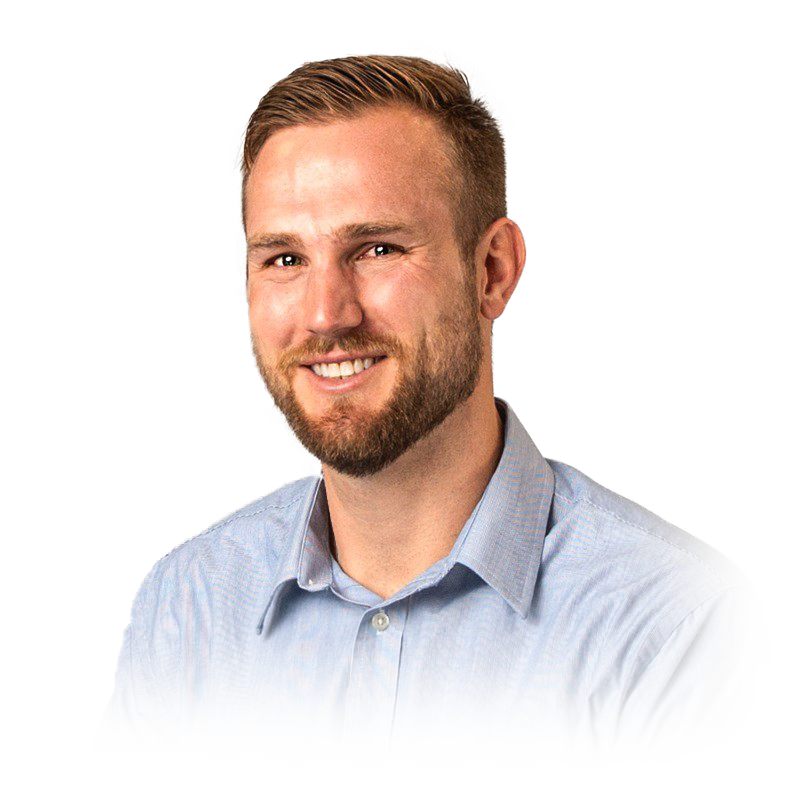What makes your approach to selling unique?
You hear a lot about creating relationships and building trust in sales. Which is good, but the way I try to do this isn't by a focus on being "relational." Instead, I'm direct and I focus on getting to the point.
To ensure I’m really focused on the heart of, "What are you trying to solve? What do you care about?" I use a business case.
That's how I build trust, and how I work with them on a solution that's actually going to fit their business —versus something we're just trying to push on them.
So in short, going through the business case process makes my approach to selling unique.
What was happening when you decided to start exploring the idea of building business cases?
I'm two and a half years into enterprise and I would say I've always probably been minded this way.
It used to come across more interrogating. So you think of the traditional stages, qualification, discovery, proposal, negotiation, close one type of stuff. And I feel like all of it was centered around trying to get enough information to build a business case that helps us win.
And the focus used to be to maximize that and get enough details to get them a proposal. Versus the flip side – having it be conversational. You are still going deep in conversation, but it's like more of the ‘why’.
And Andrew and I were talking about, some of the conversations I have now sound like:
"We'll put together a shared document with 3 parts: the initial situation, complication, and recommendation. Then we’ll all stand back and read it. Often, I’m like, ‘Honestly, guys, this is kind of weak. What’s the real ‘why’ behind this?’
If you really want to see bring this to your CFO, it needs to be a much stronger case. How can we develop this together?”
That's been the main shift. And then even shifting away from doing PowerPoint slides, I still do some slides, but I would say it's like way more focused.
The PowerPoint really leads into why we are the best option for you. And here's how we get you from point A to point B.
How would you describe the workflow that Fluint helps enable for you?
I'm always using the Fluint transcripts. We're having the Fluint notetaker come onto my calls typically, or we have Gong too. So I can take that transcript and I can plug it into Fluint after the call.
I then use that to generate like my follow-up emails, which are pretty clear and concise. I'll even generate content for getting my sales engineer up to speed and just using a document.
It doesn't take much time. There's different options within Fluint to have a one-page business case or the SCR framework which I've been referring to a lot since it's has more of a consultative feel, which is probably the one I like the most to start.
I'll send the first version of the document out to the client to try to get some feedback engagement. And then we'll use that on that next call to kind of walk through and set the stage for further discovery.
And then we both bring in more folks after that initial discovery call like my sales engineer, they bring in other folks and we go more in-depth. We start with that document and that's where I refer to like the chat-bubbles and starting to have more like back and forth like: "here's some questions I had after our last conversation, like did this hit home?"
And then I start refining that either using that same context, or maybe I'll switch to one of the other business cases, or I'll even mix and match messaging frameworks depending on the deal.
For this deal I've been talking about I added on like scope of work, mitigation plan, financial evaluation, and I'll add in like a high level, and an expected ROI.
How were you doing these things before us?
It was just Google Docs, and going back to your earlier question on what triggered this change has to do with a billion company I worked with in the enterprise space.
I asked them (a question that Nate will recommend): what tools or resources do you all use internally to get something approved? What would be relevant for us to use? So they sent me over a Word doc that they had to get approved for. To their IT team, and ultimately their board to get something approved. And it was very in depth.
That kind of triggered me thinking a lot of people are probably going through a similar process. I think that's actually what led me to Fluint is to start looking at things that would improve the business cases I was creating.
Did you explore any other solutions? Why did you choose Fluint?
No, I don't think so. I honestly don't remember there being a whole lot of options out there.
And this wasn't like a company wide initiative, this was me just taking the initiative and seeing an opportunity for how I could work better with companies, especially enterprise space.
Especially when you're talking about working with multiple departments and working with 20 to 30 people. How the heck do you keep some kind of level of story and agree on a problem? Whatever you're talking about, if you have 20 to 30 people talking about something, you're all going to be talking about something different.
Fluint provided a way to consolidate that and really get crisp on what is it we're talking about. What is the scope? And how do we solve that? It ensures that at the very least you have something to start framing up the conversation.
Is there anything you do with Fluint that otherwise wouldn’t be happening day-to-day?
Probably having a business case to start every deal would not be happening without Fluint. I'd probably reserve those as it progresses, which I think would take away from the whole purpose of it.
Because, again, this is allowing it to be more open. We're introducing the concept super early on. It's literally after my first call I have with them.
I send over a first draft to start the dialogue. And then building upon that. If I waited till the end, I feel like it would lose some of its punch and probably feel a lot more like it's coming for me trying to sell to them.
So I think I'd be able to do it, it would just be way more time consuming and therefore wouldn't happen as often.
I only have so much time in the day so Fluint helps give me something to start each deal with. This matters because you don't fully know what you're getting into when you start a deal oftentimes.
Once Fluint gives you that starting point, you just build on that.
What would you miss the most if Fluint went away?
Fluint has really become ingrained in my processes. So I'd miss it a lot.
It really helps me to frame up conversations. I'd miss the time savings. I think that'd probably be the biggest pain point, is I'd start using maybe Google Docs and start teeing stuff up with some general templates and plugging stuff in.
And I could use the transcripts I have from Gong but it wouldn't automatically plug that stuff in and frame it up in a way that makes sense. With Fluint I generate content in 1-click.
The content it generates is probably 90 or 95% of the way there, at least to start. Then I just tweak it a little bit and send it over. So I feel like, yeah, it would take a ton of time to do this without Fluint.
What would you say to someone who is considering selling with Fluint?
If their current process isn't yielding great results, I would show them what it could look like if they started selling with business cases.
I'd ask them: how well is your current process working? If you're not being successful, or if you're losing deals when you're not part of the conversation, or if you're losing to your competition because there's no clear differentiation, then I'd say:
That's a great reason to create some separation, and try to win more deals when you're not in the room.







